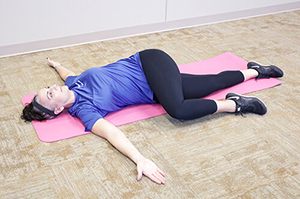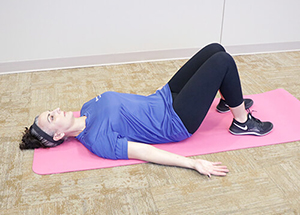Physical therapist Tim Varughese, manager of clinical services at OhioHealth McConnell Heart Health Center, says that when older adults are getting rehabilitation for their shoulders, most people in their 50s are dealing with pain and inflammation, while most people in their 60s are recovering from shoulder surgery.
“You’re more likely to experience an injury in your 60s,” he says. “That means for those in their 50s, it’s time to plan ahead and deal with shoulder issues now.”
As part of our continuing series on avoiding injury decade-by-decade, Varughese identifies the issues that lead to shoulder pain, the injuries you’re at risk for, and some steps you can take to stay flexible for years to come.
Shouldering a burden
Varughese says one of the most common locations people experience pain in their 50s is in their rotator cuff, a collection of muscles and tendons in the shoulder that are responsible for the proper function and movement of your shoulder joint.
He identifies three sources of shoulder pain. “Rotator cuff injuries can be caused by accidents, like a fall or direct blow to the shoulder. They can also be caused by inflammation due to overuse, like a weekend of gardening, raking leaves or scrubbing floors,” he says.
“When we use our muscles and tendons, there is a cycle of breakdown and rebuilding that occurs. If your shoulder muscles are deconditioned from lack of use, they can’t keep up with rebuilding, and a sudden burst of heavy activity can lead to inflammation and pain.”
The third cause, which is the most common and most manageable, is bad posture. “Postural changes happen as we age,” says Varghese. “We sit more often as we get older. Many of us are also spending more time looking down at phones and tablets.” This causes your thoracic spine – the section of your spine that runs from your neck to your lower back and anchors your rib cage – to curve forward. “When your spine begins to curve, that sets off a chain reaction that tightens the muscles in your chest. Tight chest muscles prevent your shoulder blades from moving as far or as freely as they should. When your shoulder blades are drawn down tightly on the tendons in your rotator cuff, reaching over your head pinches, or impinges, those tendons. The first few pinches are unlikely to cause pain, but extended over-the-head activity like painting a ceiling or hanging Christmas lights will begin to hurt.”
Get your back on track
“Shoulder impingement is a combination of poor posture and a weakness in the cuff itself,” says Varughese. “These thoracic mobility exercises can keep your midback and chest muscles loose and flexible, and decrease the pressure on your rotator cuff.”
Seated thoracic extension with foam roller
Sit in a high-back chair with a foam roller or rolled towel across your thoracic spine. Raise your shoulders and interlock your fingers behind your neck, and extend your back over the roll 10 times. Raise or lower the roll to another spot in your back and repeat.
Floor thoracic extension with foam roller
Just like the seated extension, place the foam roller across your thoracic spine and interlock your fingers behind your neck, drawing your elbows together toward the ceiling. Bend your knees and put your feet flat on the floor. Gently extend your spine over the roll several times, then move the roll and repeat.
Thoracic rotation
Lie on your back with your arms extended. Lift one leg, bend it at the knee about 90 degrees and cross it over your other leg. Try to touch your knee to the ground without lifting your shoulder blades from the floor. Repeat several times on both sides.
Thoracic extension
While on your knees, place your elbows on a surface about as high as your hips, like a coffee table or bench. Lower your head between your arms, drawing your shoulders together and extending your thoracic spine. Repeat several times. You can also add rotation to this exercise by putting one hand on the floor, one hand behind your neck, and rotating your spine as you raise your elbow. Repeat on both sides.
Pectoral stretch
Stand in a doorway with your elbows even with your shoulders and your forearms against the door frame. Step into the doorway and hold a stretch of your chest for 30 seconds. Repeat three times.
Decompression exercise
Here’s an easy one! Lie on your back with your head in a neutral position. Support your head with a pillow if your chin is too high, or your neck with a rolled towel if your chin is too low. Bend your knees, put your feet flat on the floor and rest your arms at your side. Relax for five to 10 minutes without moving.
Rotator cuff band exercises
Using an exercise band, keep your elbows at your sides and draw the band tight across your abdomen. Repeat 10 times. This exercise focuses on external rotation. To perform an internal rotation exercise, tie the end of the exercise band to a closed door. Beginning with your elbow at your side and your forearm extended, draw the band toward your stomach. Repeat 10 times.
If you’re having pain, OhioHealth sports medicine physicians and physical therapists can help pinpoint your issues and get you on a plan to better health. Browse the wellness services at McConnell Heart Health Center or talk with your primary care doctor about starting a fitness plan.
Categories: Physical Therapy, Prevention
Series: Preventing Injury at Every Age










